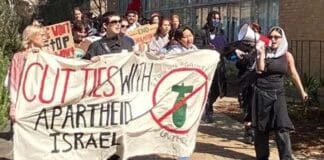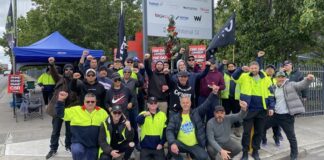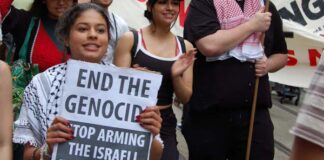Journalist Ray Martin’s documentary, part of SBS’s “Face up to Racism” week, exposes the racism of everyday life in Australia. But it fails to target the source of racism in Australia in government and major institutions, and show how we can fight it.
The documentary films a number of “experiments” to test how people react to Anglo or non-Anglo people in different scenarios.
In one, a young white man and a young Aboriginal man cut off a lock from a bike at the same Perth shopping mall at different times. When the white man cuts off the lock, no one reacts.
When the young Aboriginal man Josh cuts it, people start filming on their cameras and security guards are called. Without even speaking to him, they slam him onto the ground, put their knee into his back and swear at him. As Josh explains, “When I go to the supermarket or the shops I get followed around a lot by the security guards. It happens every time I go to the shops”.
The experiments depict just how intense and widespread racism is.
This is backed up by the findings of a major survey into racism and prejudice undertaken by Professor Kevin Dunn at the University of Western Sydney for the program. One in five Australians (five million people) reported experiencing racism in the last 12 months. And 77 per cent of Muslim women had experienced racism on public transport or in the street.
But the show also demonstrates that for the majority of people the question of whether they accept racism is contradictory and fluid. Four of five Australians said they support multiculturalism and agree that, “having a multicultural population has been good for Australia.” In the documentary, many bystanders stepped in to oppose racist abuse in the experiments.
The malleability of racism is shown in an experiment contrasting how people react to differing portrayals of the arrival of boats of refugees.
In one portrayal viewers are shown a news segment describing refugees as breaching our borders, illegal arrivals and being potential terrorists. The response of the viewers was to argue that we need to control our borders and that we are too lenient in letting people into Australia.
When the same viewers were given a portrayal of refugees arriving with relief and happiness and families greeting each other, they responded in a completely different way. They all thought we should be helping refugees, albeit some reluctantly, and didn’t want to see kids in danger. This “framing effect” changed the opinion of 78 per cent of viewers.
Source of racism
This is where the analysis from the documentary really stops. Where racism comes from and how it is perpetuated is a gaping hole.
The media does play a role in entrenching racism. But the source of the rhetoric about, for instance, the supposed threat of “illegal boat arrivals” and the hysteria about “Muslim extremism” has been government, and the political interests that drive it.
Refugees only became a major issue in Australia when the Howard government began locking them up in remote detention centres in 1999, running a campaign of demonisation and eventually sent the SAS onto the Tampa and turned boats around.
Similarly it was Australian government participation in the wars in Afghanistan and Iraq after 9/11, and John Howard’s claims that the Muslim community had failed to “integrate” and were responsible for terrorism that set the tone for Islamophobia from the media.
Sociological experiments may reveal aspects of the manifestations of racism, but more fundamentally racism involves institutionalised discrimination. To fight racism, we have to target its roots in government policy and the biases of the police, the courts and the media.
The documentary ends by concluding that Australians as a whole are not racist and even claims that some kinds of racism are fading away.
But at the level of politics and the mainstream media, racism is on the rise. Recent years have seen a move back to assimilationist policy towards Indigenous people through policies like the NT Intervention, a surge in Indigenous child removals, rampant Islamophobia, and a bipartisan agreement about torturing refugees in offshore prison camps. Coupled with the economic failures of the system, this has created fertile ground for the resurgence of One Nation.
But the survey findings the program reports should give us hope. One third of Australians are susceptible to changes in their attitudes. More than three quarters of people think racism is a problem. This has important political consequences.
People do not simply absorb government policy or accept stereotypes uncritically.
This shows the importance of anti-racist movements like the refugee campaign, the fight against Aboriginal child removals or the horrors of Don Dale and black deaths in custody—and the need to take a stand against Islamophobia.
To confront and challenge racism, we need to fight the government and the system that creates it.
By Feiyi Zhang
Is Australia racist?
SBS
Screened 26 February





